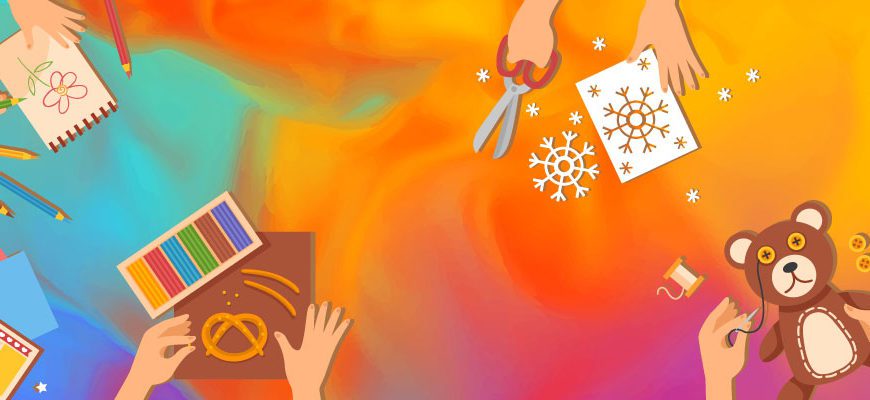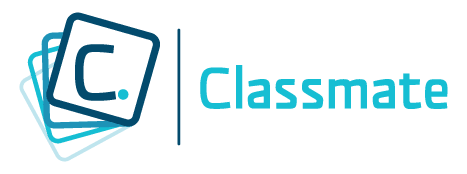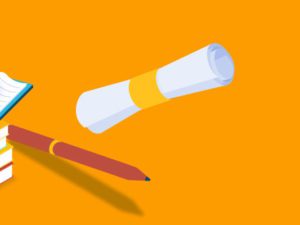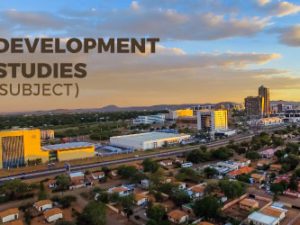FASHION AND FABRICS SYLLABUS
- Description
- Curriculum
- Reviews
Home Economics is an interdisciplinary field of study that endeavors to equip students with practical and social skills, knowledge and attitudes that are essential for success in a global society.
At Senior Secondary level it is offered as three separate subjects in the Creative, Technical and Vocational option block; Food and Nutrition, Home Management and Fashion and Fabrics. It should be noted that Food and Nutrition and Home Management are a forbidden combination, this means that they should not be taken together.
The estimated time allocated for Fashion and Fabrics at Senior Secondary level is four (4) periods of 40 minutes each per week.
Rationale
The Home Economics programme seeks to equip learners with life skills that will help them to cope with changes in a technological, socio-economical and multi-cultural society.
Learners engage in problem solving situations that require the application of knowledge and the use of practical skills. These situations take into account such factors as basic needs, lifestyles, financial resources, health, environment and their effects on the individual, family and the society.
The Home Economics programme inculcates positive attitudes towards cost effectiveness in the utilisation of local resources (available in the area)and indigenous resources (belonging naturally to an place). It also looks closely at the use of other resources.
The programme teaches learners to be self‑reliant, business minded and health conscious. These challenges promote the well being of the individual, family and society. The programme responds to changes in society and thus maintaining its realism.
The Fashion and Fabrics syllabus provides the learner with opportunities to develop knowledge and skills in both theoretical and practical aspects of the subject. It provides opportunities for learners to appreciate the importance of the subject in a rapidly changing society.
Aims of Senior Secondary Programme
On completion of the 2-year Senior Secondary programme candidates should have:
- acquired knowledge, developed confidence and ability to assess their personal strengths and weaknesses and be realistic in choosing appropriate career/employment opportunities and/or further education and training.
- developed skills to assist them in solving technical and technological problems as they relate to day-to-day life situations.
- developed desirable attitudes and behavioural patterns in interacting with the environment in a manner that is protective, preserving and nurturing.
- acquired attitudes and values, developed basic skills and understanding to allow for execution of rights and responsibilities as good citizens of Botswana and the world.
- developed information technology skills as well as an understanding and appreciation of their influence in day-to-day activities.
- acquired knowledge, attitudes and practices that will ensure good family and health practices, including awareness and management of epidemics (such as HIV/AIDS) that prepare them for productive life.
- developed pre-vocational knowledge and manipulative skills that will enable them to apply content learnt and attitudes and values developed to practical life situations in the world of work.
- developed an understanding of and acquired basic skills in business, everyday commercial transactions and entrepreneurship.
- developed foundation skills such as problem solving, critical thinking, communication, inquiring, team work / interpersonal to help them to be productive and adaptive to survive in a changing environment.
- Developed study skills required for futher studies and training
Aims of Senior Secondary Home Economics
On completion of the 2- Year Senior Secondary Home Economics programme, the learner should have:
- acquired academic rigour, to stimulate, enjoy and sustain interest in Home Economics as preparation for the opportunities, responsibilities and experience in adult life.
- developed knowledge and skills for effective organisation and management of family resources in relation to the needs and lifestyles of members.
- developed critical and analytical thinking skills to enhance effectiveness in decision making and problem solving in a contemporary society.
- developed awareness and ability to adapt to new technologies, including information technology to enhance productivity.
- developed qualities of sensitivity and aesthetic awareness needed to respond positively in a variety of situations in life.
- developed awareness and appreciation of the consumer situation locally, regionally and internationally.
- developed awareness of mandatory and other necessary safety requirements.
- developed healthy eating habits by implementation of good nutritional practices.
- acquired an understanding of human needs for food and textiles and the influences that the changing circumstances exert upon them.
- developed awareness of consumerism and environmental issues
Aims of the Senior Secondary Fashion and Fabrics
On completion of the 2-Year Fashion and Fabrics course, the learner should have:
- acquired knowledge and skills on the importance of technology in textile and clothing industry.
- acquired knowledge and skills on environmental issues related to textiles.
- acquired knowledge and skills on textile policies at national and international level.
- acquired knowledge and skillson decision-making as a consumer on contemporary Fashion and Fabrics issues.
- developed knowledge, understanding and practical skills in designing, making and/or modifying textile products.
- developedskills, basic techniques and constructing processes required in using a range of textile materials.
- developed foundation skills to enable them cope with the challenges of an ever-changing environment.
- acquired basic managerial and entrepreneurial skills in a Textile business.
- developed interest and enjoyment of creative use of textiles.
- developed knowledge and skills required in selecting and using resources effectively.
- developed critical, analytical skills in evaluating textile activities and products for an identified context or need.
- developed individual and teamwork spirit in the production of textile products.
Recommended Teaching Methods
The syllabus encourages a learner- centered approach. The learner should be responsible for his/her learning through undertaking tasks using available resources. Learners with varying aptitudes and abilities are challenged to achieve the highest possible standards of excellence. This will be achieved through the design process and discovery learning.
In this way, the end- product will no longer be the only credited factor, the skills and expertise in the process of producing an item are also recognised and duly merited. Every learner is challenged to achieve the highest possible standards of excellence, with due respect to different aptitudes and abilities. The use of locally available resources is highly recommended.
The role of the teacher is changing from being a transmitter of knowledge to a facilitator of learning. Teachers facilitate learning through various teaching methods such as problem solving, projects, experiments, cooperative learning and demonstrations relating to the learners experience.
Assessment Objectives
Knowledge with understanding
Learners will be able to demonstrate their knowledge and understanding in relation to:
- social, economic and environmental needs
- scientific, technological terminology and principles
- suitability and correct use of equipment/ tools
- techniques, methods and the need for accuracy
- creative and artistic considerations
- safety, hygiene rules and regulations
- factors influencing choice of textile materials
Handling information and solving problems
Learners should be able to:
- read and interpret information
- translate information from one form to the other
- manipulate data
- organise and manage resources in a given situation
- estimate and measure accurately
- identify problems
- identify priorities when solving problems
- assess and evaluate the effectiveness of the course of action
- recommend further development of a textile product
Practical skills and their application
Learners should be able to:
- follow given instructions
- test and compare techniques and methods, materials and equipment/tools
- construct a textile product
- demonstrate manipulative skills in machine and hand work
- carry out a variety of textile processes
- present finished work
Assessment Procedures
At the end of the course, a final examination will be administered. Continuous assessment in the form of individual study and practical tests will also contribute to certification. Individual study assesses the learner’s ability to apply knowledge and understanding in relation to the subject content. Practical tests assess some of the skills the student gained during the course.

Popular Subjects
Working hours
| Monday | 9:30 am - 6.00 pm |
| Tuesday | 9:30 am - 6.00 pm |
| Wednesday | 9:30 am - 6.00 pm |
| Thursday | 9:30 am - 6.00 pm |
| Friday | 9:30 am - 5.00 pm |
| Saturday | Closed |
| Sunday | Closed |
About
The Most Secure & Collaborative Learning Platform.
Classmate is an Inclusive, Social E-Learning platform, for students and educators to access educational content and promote collaborative learning.
The solution has been developed after making an assessment that there is a need for students to interact outside the classroom yet enjoying the classroom set up with the additional freedom of engagement
Popular Subjects







